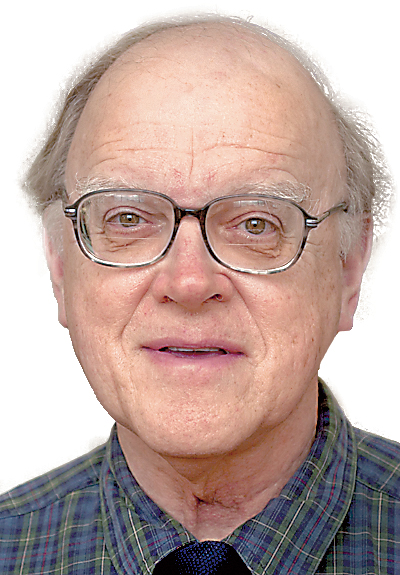"To forget the dead would be akin to killing them a second time."
These words by Elie Wiesel, who died in early July in his New York City home, inspired the many fictional and non-fictional works that constitute part of his remarkable intellectual and humanitarian legacy. He asserted that his first published work, "Night," a memoir of the Holocaust, was both the inspiration and the key to understanding his subsequent work.
Wiesel was born in the Transylvanian town of Sighet in 1928. Hungary subsequently annexed the area. From early boyhood, he became a devoted student of sacred Jewish texts and attended synagogue most evenings for further instruction.
World War II intruded upon Sighet in 1942 when all foreign-born Jews were taken away by Hungarian police. A lone survivor returned to the town later that year to report the killing of the deportees by Nazi troops in a Polish forest. His warnings to flee went unheeded.
In March 1944, Nazis occupied Hungary. Jews in Sighet were forced into two crowded ghettos. In May, Nazi troops abruptly cleared the ghettos, sending the residents first to the synagogue where they were triaged before being sent to the train station to be loaded into cattle cars - 80 people per shuttered and locked car. A stiflingly hot, two-day journey with minimal food and water brought them to the Auschwitz-Birkenau death camp in Poland. Their sparse possessions were left in the train cars.
"Men to the left. Women to the right," says Wiesel, who never saw his mother and seven-year old sister, Tzipora, again. Years after the war, he reunited with his two older sisters who had somehow survived.
The notorious Dr. Josef Mengele determined who was assigned work and who was sent to the gas chambers. He also conducted ghastly experiments on some inmates. Wiesel's father and Wiesel lied about their ages, his father claiming 40 instead of his true age 50 and Elie claiming 18 to qualify for work battalions and avoid death sentences. "A-7713" was tattooed on Elie's forearm. This was his name for the rest of his captivity.
Harsh work, a meager diet and long intervals of standing in formation in harsh weather constituted their days. They witnessed beatings and random killings of inmates. Prisoners who became ill or too weak to work were executed. Father and son each became the reason for the other to fight to stay alive. Elie survived hospitalization and painful drainage of an abscess of his foot and was discharged to work despite continued bleeding from the wound.
As Russian forces neared the death camp in January 1945, Elie and his father, in the company of those inmates who could walk, were forced on a rapid march in heavy snow without food or adequate clothing. Many died from exposure; others were shot for walking too slowly. Utterly exhausted, Elie seriously considered falling into the snow to die but dismissed the thought.
"My father's presence was the only thing that stopped me. He was running next to me, out of breath, out of strength, desperate. I had no right to let myself die. What would he do without me? I was his sole support."
Two days and 40 miles of forced march brought the survivors to a camp at Gleiwitz, where they were packed into a barrack. That night, a young musician who had somehow saved his violin played a fragment of a work by Beethoven. He died before morning.
The group was locked in the building for three days without food or water before being loaded into roofless cattle cars for transport to the concentration camp at Buchenwald. Bodies of those who had died during the night were thrown from the car each morning. When the train paused in a town, some residents tossed bread into the cars. Of the initial 80 people packed into Elie's cattle car, only 12 survived the journey.
Elie's father progressively weakened, becoming bed-ridden until a final beating on Jan. 28 Elie was transferred to a children's block of 600.
In the days leading up to April 10, when American troops liberated the camp, Nazi soldiers would call the roll each morning and determine which prisoners would be executed.
Regaining his health after leaving the camp, Elie subsequently made his way to Paris. He studied at the Sorbonne, became a journalist and, 10 years post-liberation, wrote "Night." The work was translated into English in 1960. Elie became a U.S. citizen in 1963 and was a distinguished professor at Boston University.
A tireless advocate for refugees and oppressed peoples, he was appointed in 1963 as chairman of the President's Commission on the Holocaust. In 1980, he became founding chairman of the U.S. Holocaust Memorial Council. Wiesel was awarded the Nobel Peace Prize in 1966. Subsequently, he and his wife, Marion, founded the Elie Wiesel Foundation for Humanity to fight intolerance and injustice.
"Night" powerfully personalizes the Holocaust. In the preface, the author states his duty as a survivor: "The witness has forced himself to testify. For the youth of today, for the children who will be born tomorrow. He does not want his past to become their future."
Contact Clif Cleaveland at ccleaveland@timesfreepress.com.

